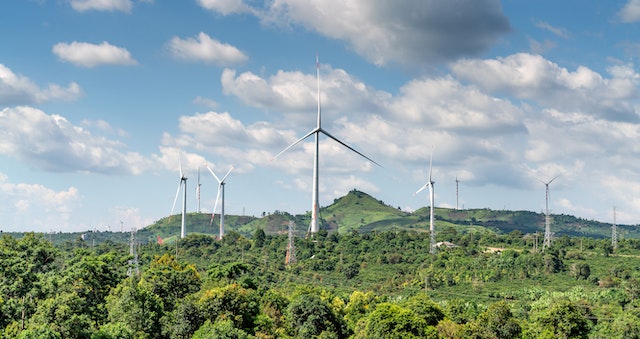In an era where the world is grappling with the challenges of climate change and a growing demand for clean, renewable energy sources, wind energy stands tall as a beacon of hope. Wind energy, derived from the kinetic energy of moving air masses, has gained widespread recognition as a sustainable and environmentally friendly alternative to fossil fuels. In this blog, we will explore the fascinating world of wind energy, its advantages, technologies, and its role in shaping a greener future for our planet.
The Basics of Wind Energy
Wind energy is harnessed through the use of wind turbines, which are designed to capture the kinetic energy of the wind and convert it into electricity. The fundamental components of a wind turbine include the rotor blades, a generator, and a tower. Here’s how it works:
- Capture the Wind: As the wind blows, it pushes against the rotor blades, causing them to spin. The angle of the blades can be adjusted to optimize energy capture.
- Convert Kinetic Energy: The spinning blades turn a generator connected to them, converting the kinetic energy of the wind into electrical energy.
- Transmission: The electricity generated is then transmitted through power lines to homes, businesses, and industries for various uses.
Advantages of Wind Energy
- Clean and Renewable: Wind energy is entirely clean and sustainable, producing no greenhouse gas emissions or air pollutants during operation. It doesn’t deplete natural resources and is not subject to supply constraints like fossil fuels.
- Reduced Carbon Footprint: Wind power significantly reduces our carbon footprint, making it a vital tool in the fight against climate change. It helps decrease our dependence on fossil fuels, reducing greenhouse gas emissions and mitigating global warming.
- Abundant Resource: Wind is an abundant and widely available resource. Wind turbines can be installed both onshore and offshore, taking advantage of the constant motion of the Earth’s atmosphere.
- Job Creation: Wind energy projects create jobs in manufacturing, construction, and maintenance, boosting local economies and providing opportunities for skilled workers.
- Low Operating Costs: Once a wind turbine is installed, its operating and maintenance costs are relatively low compared to fossil fuel power plants, making wind energy an economically viable option.
Technological Advancements
The wind energy industry has witnessed remarkable technological advancements in recent years, enhancing its efficiency and scalability:
- Turbine Design: Modern wind turbines are designed to capture more energy from lower wind speeds and have increased in size to improve energy output. This has led to a substantial decrease in the cost of wind energy.
- Energy Storage: The integration of energy storage solutions, such as advanced batteries, enables the efficient use of wind energy even when the wind isn’t blowing, providing a consistent power supply.
- Digitalization: The use of advanced sensors and data analytics allows for real-time monitoring and optimization of wind farms, improving their performance and reliability.
- Offshore Wind Farms: Offshore wind farms, situated in coastal areas, harness stronger and more consistent winds, offering the potential for greater energy generation and minimizing land use conflicts.
Challenges and Future Prospects
While wind energy has made significant strides, it does face some challenges:
- Intermittency: Wind energy production is intermittent and depends on wind speed and direction. To address this, storage solutions and grid integration must be improved.
- Aesthetics and Land Use: Some communities raise concerns about the visual impact of wind turbines and their use of land. Proper site selection and community engagement are essential to address these concerns.
- Bird and Bat Collisions: Wind turbines can pose risks to birds and bats, but ongoing research aims to mitigate these effects through better design and monitoring.
The future of wind energy looks promising. As technology continues to evolve and governments prioritize renewable energy, we can expect even more substantial contributions from wind power to our energy mix. With continued innovation and investment, wind energy will play an increasingly critical role in creating a sustainable and clean energy future.
